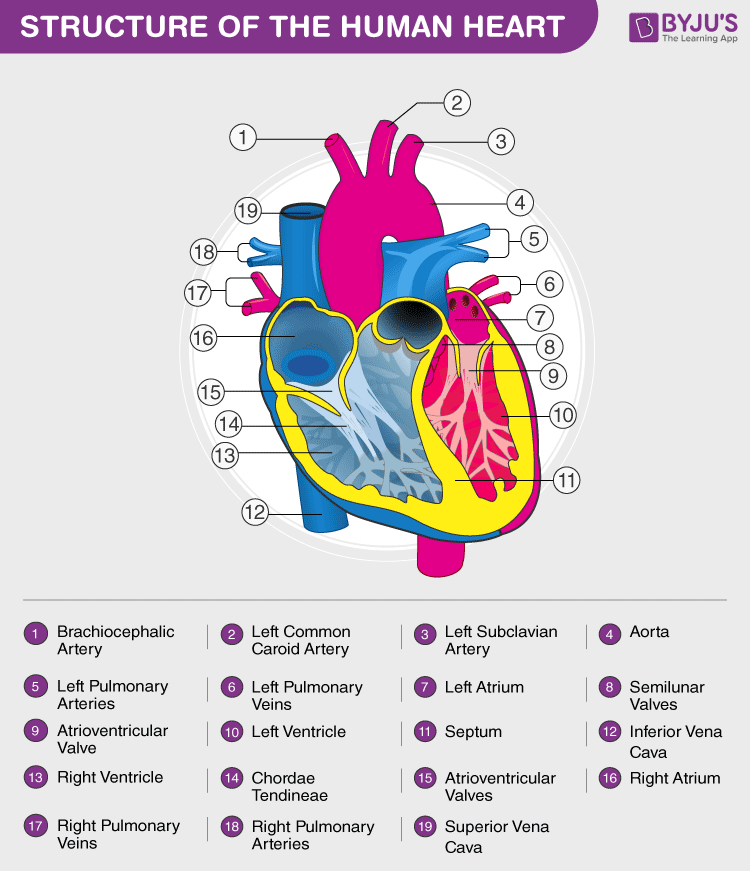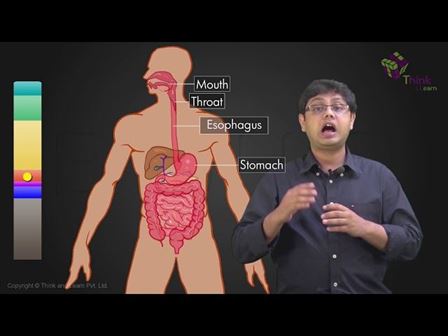The human body is a complex machine, requiring many processes to function efficiently. To keep these crucial processes running without any hitches, vital elements and components need to be delivered to the various parts of the body.
This role of transportation is undertaken by the human circulatory system, moving essential nutrients and minerals throughout the body and metabolic waste products away from the body. Below is a neat labelled Circulatory system diagram.
Read more: Human Body Anatomy
Read on to explore intricate about the human circulatory system and its components in greater detail.
Table of Contents
Human Circulatory System Diagram
Human Circulatory System
The human circulatory system consists of a network of arteries, veins, and capillaries, with the heart pumping blood through it. Its primary role is to provide essential nutrients, minerals, and hormones to various parts of the body. Alternatively, the circulatory system is also responsible for collecting metabolic waste and toxins from the cells and tissues to be purified or expelled from the body.
Features of Circulatory System
The crucial features of the human circulatory system are as follows:
- The human circulatory system consists of blood, heart, blood vessels, and lymph.
- The human circulatory system circulates blood through two loops (double circulation) – One for oxygenated blood, another for deoxygenated blood.
- The human heart consists of four chambers – two ventricles and two auricles.
- The human circulatory system possesses a body-wide network of blood vessels. These comprise arteries, veins, and capillaries.
- The primary function of blood vessels is to transport oxygenated blood and nutrients to all parts of the body. It is also tasked with collecting metabolic wastes to be expelled from the body.
- Most circulatory system diagrams do not visually represent its sheer length. Theoretically, if the veins, arteries, and capillaries of a human were laid out, end to end, it would span a total distance of 1,00,000 kilometres (or roughly eight times the diameter of the Earth).
Organs of Circulatory System
The human circulatory system comprises 4 main organs that have specific roles and functions. The vital circulatory system organs include:
- Heart
- Blood (technically, blood is considered a tissue and not an organ)
- Blood Vessels
- Lymphatic system
Heart
The heart is a muscular organ located in the chest cavity, right between the lungs. It is positioned slightly towards the left in the thoracic region and is enveloped by the pericardium. The human heart is separated into four chambers; namely, two upper chambers called atria (singular: atrium), and two lower chambers called ventricles.

Heart, a major part of the human circulatory system
Though other animals possess a heart, the way their circulatory system functions is quite different from humans. Moreover, in some cases, the human circulatory system is much more evolved when compared to insects or molluscs.
Read More: Human Heart
Double Circulation
The way blood flows in the human body is unique, and it is quite efficient too. The blood circulates through the heart twice, hence, it is called double circulation. Other animals like fish have single circulation, where blood completes a circuit through the entire animal only once.
The main advantage of double circulation is that every tissue in the body has a steady supply of oxygenated blood, and it does not get mixed with the deoxygenated blood.
Further Reading: Double circulation

Circulation of blood in humans – Double circulation
Blood
Blood is the body’s fluid connective tissue, and it forms a vital part of the human circulatory system. Its main function is to circulate nutrients, hormones, minerals and other essential components to different parts of the body. Blood flows through a specified set of pathways called blood vessels. The organ which is involved in pumping blood to different body parts is the heart. Blood cells, blood plasma, proteins, and other mineral components (such as sodium, potassium and calcium) constitute human blood.
Blood is composed of:
- Plasma – the fluid part of the blood and is composed of 90% of water.
- Red blood cells, white blood cells and platelets constitute the solid part of blood.
Types of Blood Cells
The human body consists of three types of blood cells, namely:
- Red blood cells (RBC) / Erythrocytes
Red blood cells are mainly involved in transporting oxygen, nutrients, and other substances to various parts of the body. These blood cells also remove waste from the body.
- White blood cells (WBC) / Leukocytes
White blood cells are specialized cells, which function as a body’s defence system. They provide immunity by fending off pathogens and harmful microorganisms.
- Platelets / Thrombocytes
Platelets are cells that help to form clots and stop bleeding. They act on the site of an injury or a wound.
Blood Vessels
Blood vessels are a network of pathways through which blood travels throughout the body. Arteries and veins are the two primary types of blood vessels in the circulatory system of the body.
Arteries
Arteries are blood vessels that transport oxygenated blood from the heart to various parts of the body. They are thick, elastic and are divided into a small network of blood vessels called capillaries. The only exception to this is the pulmonary arteries, which carries deoxygenated blood to the lungs.
Veins
Veins are blood vessels that carry deoxygenated blood towards the heart from various parts of the body. They are thin, elastic and are present closer to the surface of the skin. However, pulmonary and umbilical veins are the only veins that carry oxygenated blood in the entire body.
Also Read: Blood
Lymphatic System
The human circulatory system consists of another body fluid called lymph. It is also known as tissue fluid. It is produced by the lymphatic system which comprises a network of interconnected organs, nodes and ducts.
Lymph is a colourless fluid consisting of salts, proteins, water, which transport and circulates digested food and absorbed fat to intercellular spaces in the tissues. Unlike the circulatory system, lymph is not pumped; instead, it passively flows through a network of vessels.
Functions of Circulatory System
The most important function of the circulatory system is transporting oxygen throughout the body. The other vital functions of the human circulatory system are as follows:
- It helps in sustaining all the organ systems.
- It transports blood, nutrients, oxygen, carbon dioxide and hormones throughout the body.
- It protects cells from pathogens.
- It acts as an interface for cell-to-cell interaction.
- The substances present in the blood help repair the damaged tissue.
Explore More: Circulatory System
Recommended Videos:


Discover more about the circulatory system by registering at BYJU’S Biology. Find more concepts and important questions about human circulatory system Class 11 by downloading BYJU’S – The Learning App.
Frequently Asked Questions
1. How does the human circulatory system work?
2. What are the three types of circulation?
- Pulmonary Circulation
- Systemic Circulation
- Coronary Circulation
3. Is the human circulatory system open or closed?
4. What is the advantage of a closed circulatory system?
5. What is double circulation?
6. What are the dangers of high blood pressure?
7. What is a stroke?
8. What is hypertension?
9. What is hypo-tension?
10. What was the earliest circulatory system like?


It was indeed a good blog. The concept was much clear.
Tq
nice project
I think it would help me in my studies
VERY CLEAR AND INTERSTED TO LEARN THANKS FOR CLEAR DETAILS
That was really helpful .Thank you so much
nice explanation
Very nice, it is amazing.
Thanks, That was really helpful